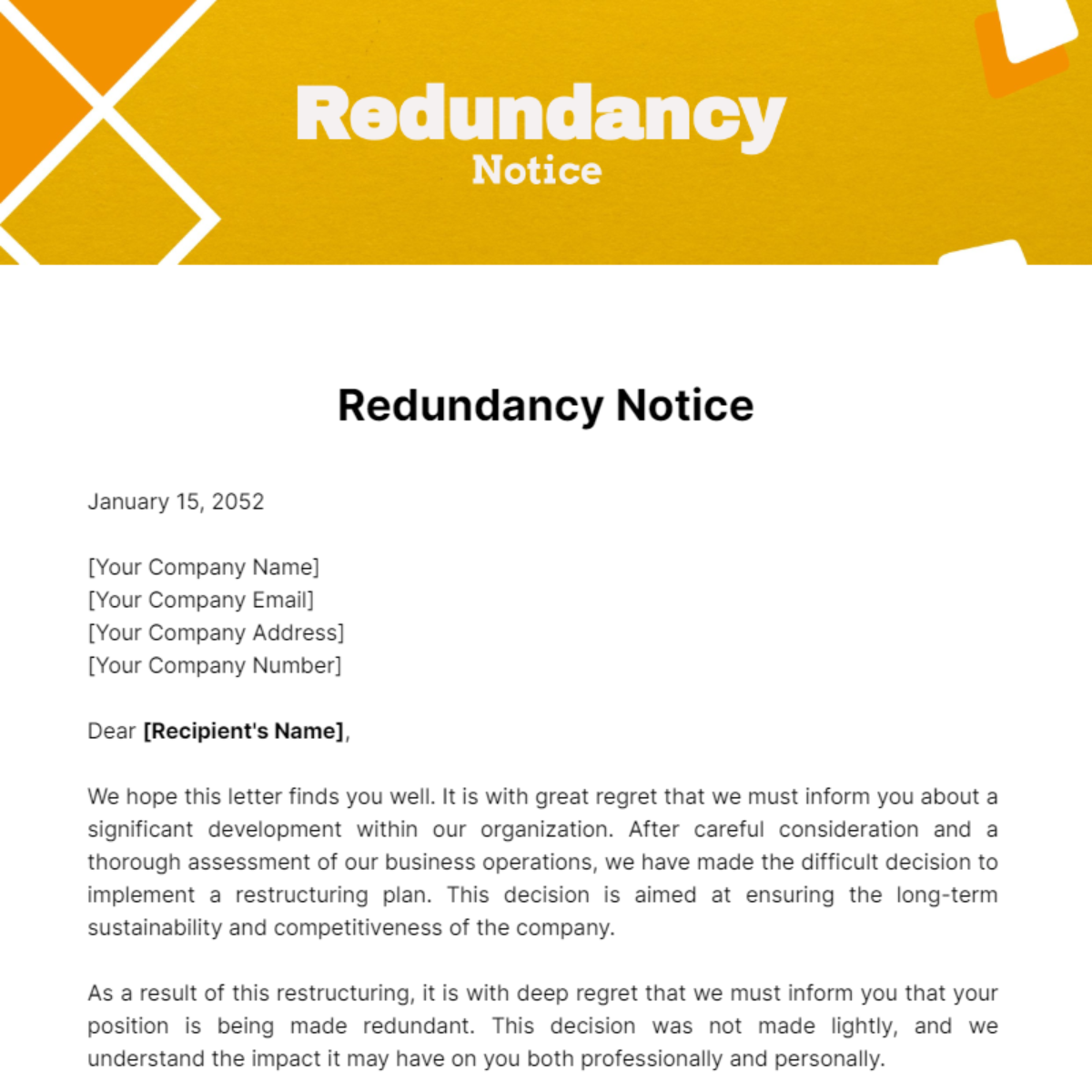Investigating the Interaction Between Firm Redundancy and Organizational Flexibility for Future Growth
In the vibrant landscape of today's business world, the complex partnership in between company redundancy and organizational flexibility arises as a vital factor for sustained growth and success. Business usually encounter the challenge of striking a delicate balance between preserving a degree of redundancy to minimize threats and fostering adaptability to respond quickly to the ever-evolving market needs.
Relevance of Firm Redundancy
Firm redundancy is a crucial element that enhances organizational resilience and reduces operational dangers. By integrating redundancy procedures within the business framework, business can better endure unanticipated disturbances and variations in business setting. Redundancy works as a calculated buffer, enabling companies to adapt and react effectively to unanticipated difficulties without compromising essential operations.
One key facet of the importance of firm redundancy is its duty in making sure continuity during times of situation. When confronted with sudden changes or emergency situations, repetitive systems, resources, or personnel can action in to keep crucial features and avoid prevalent disruptions. This connection not only safeguards the firm's track record and customer trust however also minimizes monetary losses and operational downtime.

Strategies for Organizational Adaptability

One more crucial approach is buying innovation and framework that can sustain flexibility and scalability. Implementing digital tools, automation, and data analytics can enhance procedures, improve effectiveness, and give valuable insights for informed decision-making. Furthermore, producing adaptable business frameworks that enable for fast modifications to market characteristics and consumer demands is essential for remaining affordable in a swiftly advancing setting. By proactively recognizing possible disturbances and possibilities, companies can proactively grow my sources and adjust in an ever-changing click to find out more service landscape.
Balancing Redundancy and Flexibility
Accomplishing a harmonious stability in between functional redundancy and business versatility is critical in navigating the intricacies of a dynamic business environment. Redundancy within a firm offers a safeguard, making sure continuity and security in operations. Nonetheless, an extra of redundancy can cause inadequacies and impede adaptability to transforming market conditions. On the various other hand, business versatility permits firms to react quickly to exterior interruptions and confiscate new possibilities. Striking the best equilibrium between redundancy and flexibility is a delicate procedure that calls for a deep understanding of the organization's objectives, industry dynamics, and threat tolerance.
To attain this equilibrium, firms require to perform normal analyses of their procedures to recognize locations where redundancy is essential for threat mitigation and where versatility can drive technology and growth. Executing flexible structures, fostering a society of continual understanding and renovation, and urging open interaction across all levels of the company are vital approaches to integrate redundancy and versatility successfully. By lining up these two crucial elements, firms can place themselves for sustainable growth and success in an ever-changing business landscape.
Study on Adjustment Success
In checking out instances of successful organizational adaptation, it ends up being obvious that the interaction in between functional redundancy and flexibility is a defining element in forming durable organizations. A DVD rental solution, Netflix showed remarkable adaptability by transitioning into a streaming platform when digitalization disrupted the industry. These case studies underscore the significance of operational redundancy combined with business flexibility in cultivating lasting development and competition.
Building Durability for Future Development
Building strength for future growth calls for a critical positioning of functional procedures with market dynamics and arising trends. Firms should adjust to altering settings by promoting a society of versatility, innovation, and continual improvement.
Furthermore, cultivating strong partnerships with stakeholders, such as customers, staff members, providers, and the area, is vital for weathering unpredictabilities and preserving depend on and assistance throughout unstable times. Effective communication and openness play a vital function in structure resilience, as they assist promote and align assumptions partnership in browsing unpredictabilities.
Furthermore, organizations require to focus on learning and development efforts to upskill staff members and outfit them with the necessary tools to adapt to altering scenarios. By buying their labor force, companies can enhance their adaptability and agility, eventually strengthening their resilience for sustainable future growth.
Final Thought

In the dynamic landscape of today's organization world, the detailed relationship between firm redundancy and organizational versatility arises as a crucial aspect for continual growth and success. Business usually face the difficulty of striking a fragile balance between preserving a degree of redundancy to mitigate dangers and promoting flexibility to respond swiftly to the ever-evolving market needs.To attain this balance, companies need to carry out normal analyses of their operations to identify areas where redundancy is needed for threat reduction and where adaptability can drive development and growth.In final thought, the interplay in between firm redundancy and business adaptability is essential for future development. Structure strength via a mix of redundancy and flexibility will certainly make certain that companies are prepared for the challenges of the future.